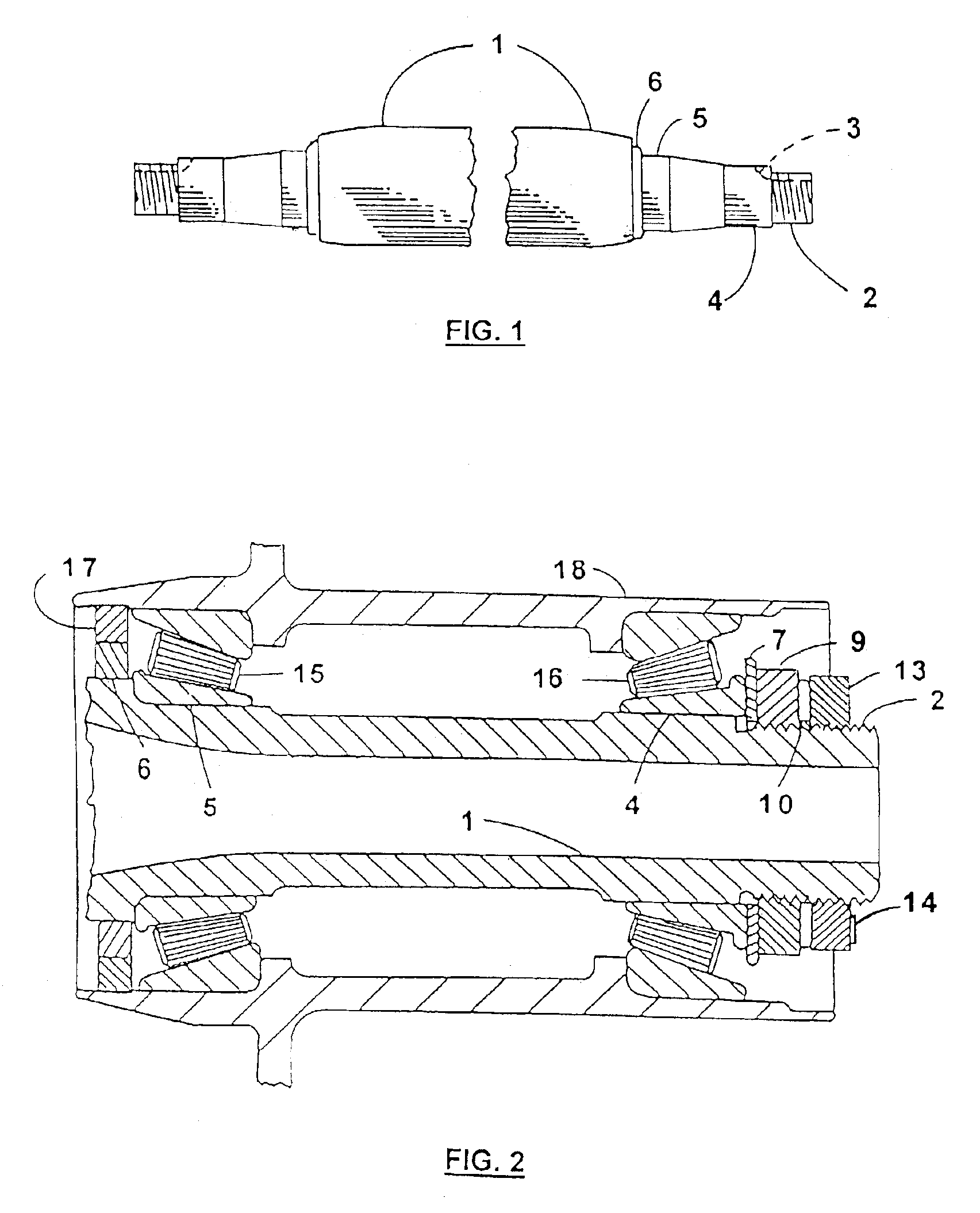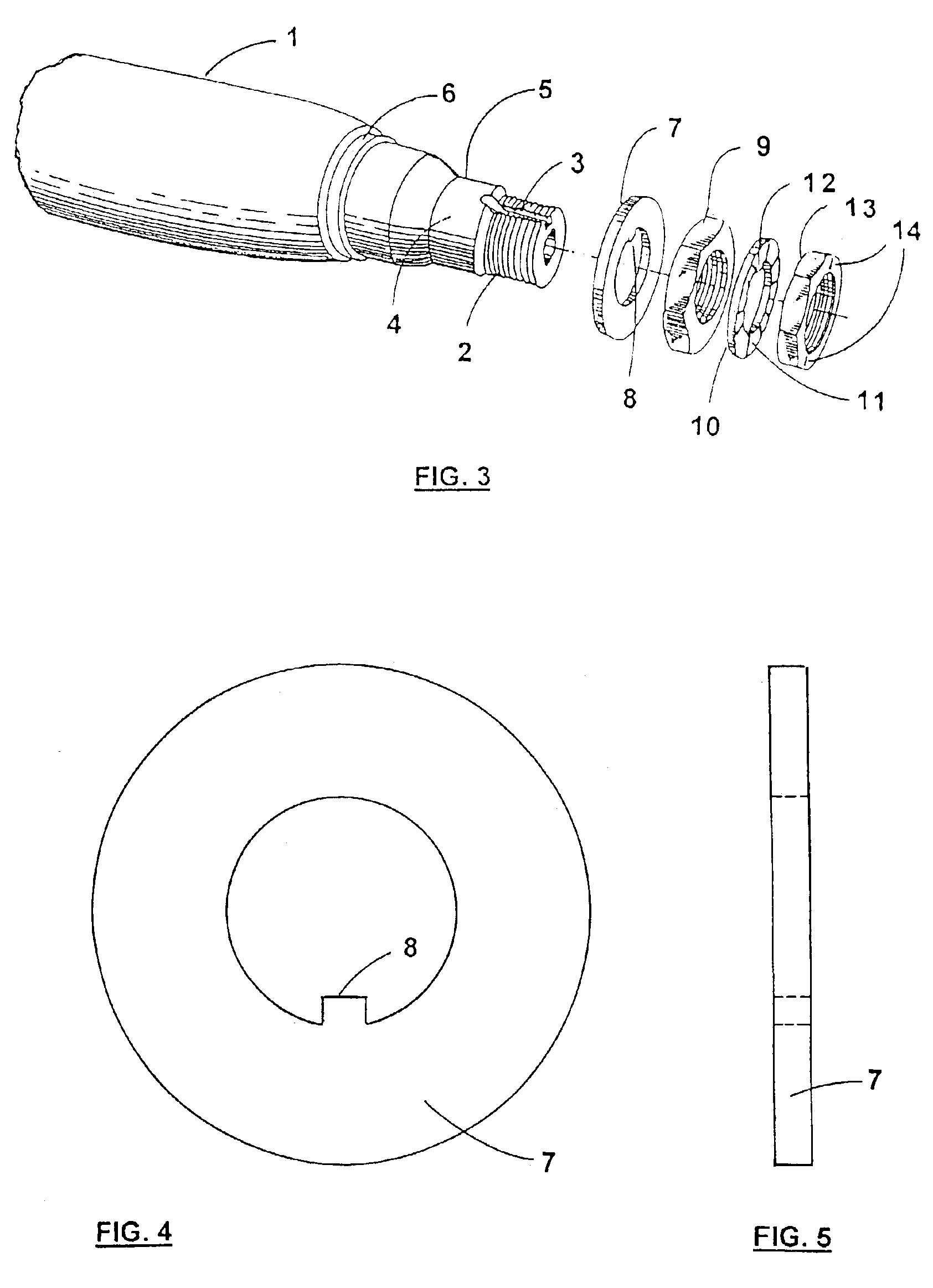High-integrity interlocking nut and washer system
- Summary
- Abstract
- Description
- Claims
- Application Information
AI Technical Summary
Benefits of technology
Problems solved by technology
Method used
Image
Examples
Embodiment Construction
[0033]Reference is now made to the Drawings, wherein FIG. 1 depicts a prior-art axle beam 1 having conventional threads 2, a washer keyway 3, an outer bearing journal 4, an inner bearing journal 5 and an oil seal surface journal 6. Referring to FIG. 2, an oil seal 17 is shown in its respective position mounted between wheel or hub 18 and the axle spindle 1. Inner tapered roller bearing 15 is positioned between the wheel or hub 18 and the bearing journal 5. An outer tapered roller bearing 16 is also positioned in its working arrangement between the wheel or hub 18 and the outer bearing journal 4 of the axle spindle 1.
[0034]The invention will now be described in conjunction with the prior-art components introduced with respect to FIGS. 1 and 2. FIG. 3 is an exploded, perspective view showing the components of the preferred embodiment, which include an inner, hardened washer 7, an adjustment nut 9, an intermediate interlocking washer 10, and an interlocking retainer nut 13, all mountab...
PUM
 Login to View More
Login to View More Abstract
Description
Claims
Application Information
 Login to View More
Login to View More - R&D
- Intellectual Property
- Life Sciences
- Materials
- Tech Scout
- Unparalleled Data Quality
- Higher Quality Content
- 60% Fewer Hallucinations
Browse by: Latest US Patents, China's latest patents, Technical Efficacy Thesaurus, Application Domain, Technology Topic, Popular Technical Reports.
© 2025 PatSnap. All rights reserved.Legal|Privacy policy|Modern Slavery Act Transparency Statement|Sitemap|About US| Contact US: help@patsnap.com



